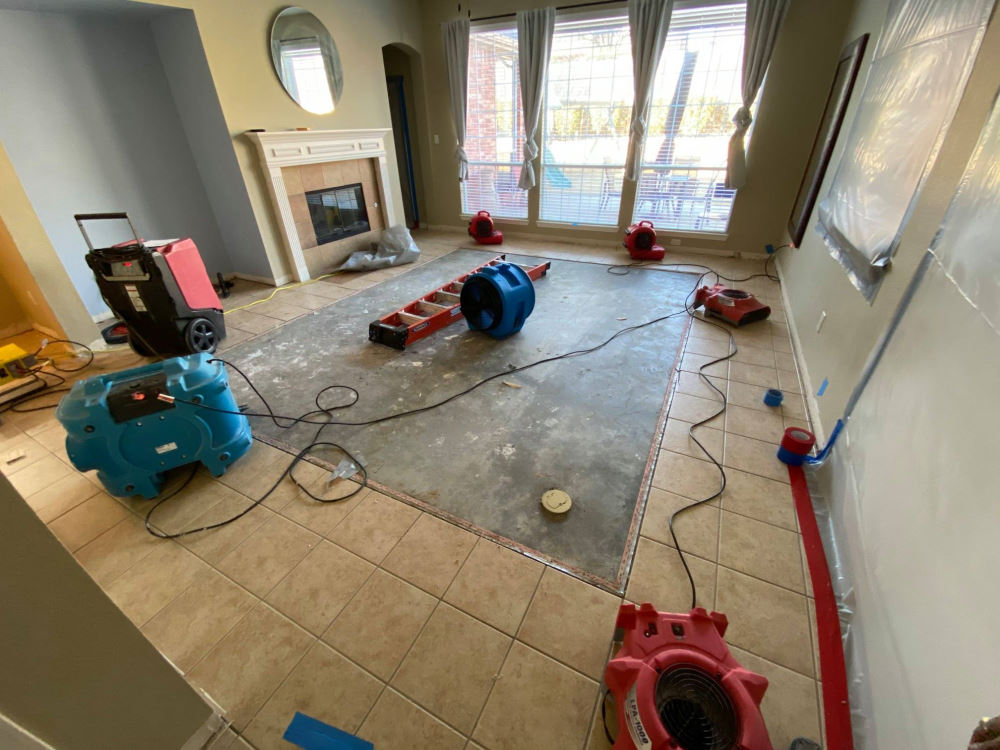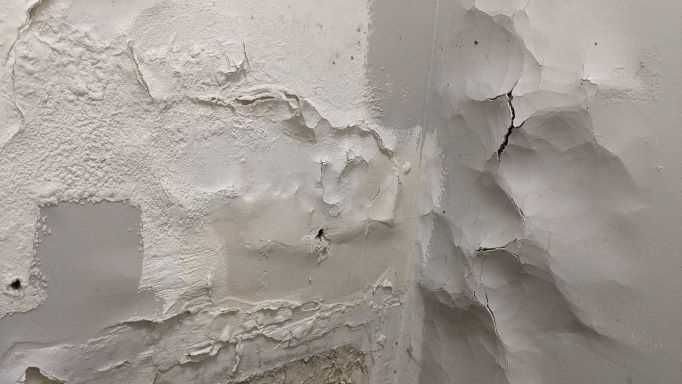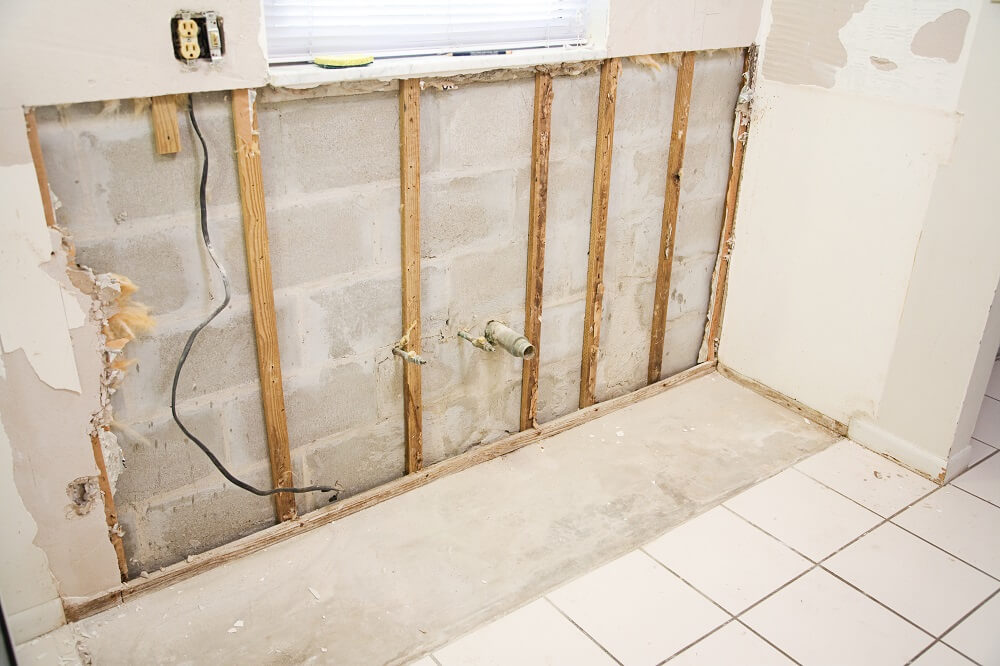Water Damage Cleanup Experts Offering Prompt and Efficient Solutions
Water Damage Cleanup Experts Offering Prompt and Efficient Solutions
Blog Article
The Process of Water Damage Cleanup: Ensuring Your Home Is Brought Back Efficiently
Water damages can be a complicated difficulty for property owners, necessitating a thorough and organized cleaning process to restore safety and capability. damage restoration services. Following this, effective water extraction strategies play an essential role in alleviating further injury.
Analyzing the Damages
Upon finding water damages, the very first action is to extensively analyze the degree of the influence. This preliminary analysis is essential, as it helps identify the necessary steps for reliable cleanup and restoration. Begin by checking the impacted locations, including walls, ceilings, floors, and personal belongings, to determine the source of the water invasion, whether from flooding, leakages, or condensation.
Documenting the damages is crucial for both insurance policy cases and preparing reconstruction initiatives - damage restoration services. Usage photographs and composed notes to capture the intensity of the damage, noting any type of affected architectural aspects and products. Pay special interest to locations that may not be immediately noticeable, such as behind walls and under rugs, as concealed dampness can cause additional issues, consisting of mold development
Additionally, evaluate the timeline of the water exposure. The longer the materials remain damp, the higher the possibility for damage. Comprehending the duration of exposure will notify the seriousness of remediation initiatives. Inevitably, an extensive assessment prepares for a successful water damages cleanup procedure, making sure that all impacted locations are dealt with successfully and completely.
Water Removal Techniques

Experts commonly use submersible pumps for larger quantities of water, which can rapidly minimize flooding in cellars or various other affected locations. For smaller quantities, wet/dry vacuum cleaners are typically used to extract recurring moisture from carpetings and tough surfaces. In addition, using portable extractors allows for targeted removal in confined spaces or locations with delicate materials.
In circumstances of infected water, such as sewage or floodwater, advanced extraction techniques may involve the usage of biohazard tools to ensure security and compliance with wellness regulations. High-powered removal devices are crucial in reducing water retention in architectural materials, which can bring about mold and mildew growth and structural deterioration if not dealt with without delay.
Inevitably, the performance of water removal methods plays a crucial duty in the overall success of the water damages clean-up procedure, preparing for succeeding repair initiatives.
Drying and Dehumidification
As soon as standing water has been successfully removed, the following vital stage in the water damage clean-up process is drying out and dehumidification. This action is necessary to prevent more damages and mold development, which can occur within 24 to 48 hours in damp settings.
To achieve effective drying, customized tools such as industrial-grade air moving companies and dehumidifiers is used. Air movers circulate air across wet surfaces, improving evaporation prices, while dehumidifiers minimize moisture levels in the air, advertising a helpful atmosphere for drying. The combination of these tools makes flood mitigation companies certain that moisture is extracted from furnishings, walls, and floors, enabling them to dry thoroughly.
It is essential to monitor the drying out procedure closely. Specialists commonly use wetness meters to examine the wetness content in numerous materials, guaranteeing that all impacted locations get to appropriate dry skin degrees. This thorough method assists to avoid covert moisture pockets that might result in architectural damages or unhealthy mold development.

Cleansing and Sanitizing
After the drying out and dehumidification phase is total, the next crucial step in water damages cleanup is cleansing and sanitizing the influenced areas. This procedure is important to stop the development of mold and mildew, microorganisms, and various other microorganisms that prosper in damp settings.
The cleaning stage normally includes getting rid of any type of particles, dirt, and pollutants from surfaces utilizing specialized cleansing agents. For difficult surface areas, a mix of soap and water or commercial cleansing items is frequently used. Soft materials, such as upholstery and carpets, may call for more considerable cleaning approaches, consisting of steam cleansing or deep removal methods, to make certain thorough sanitation.

Sanitizing complies with cleaning, using EPA-approved disinfectants to remove hazardous bacteria. This step is vital, specifically in areas that might have entered call with floodwaters or sewer, as these resources can pose severe wellness threats.
In addition, it is very important to resolve any staying odors, which may need using odor neutralizers or advanced techniques like ozone therapy. Correct cleansing and sanitizing not just recover the safety and security and health of your home but likewise lay the foundation for successful remediation and repair work in subsequent phases of the water damages clean-up process.
Restoration and Repairs

Once the evaluation is full, remediation efforts can start. Additionally, flooring may need comparable interest, depending on the degree of water exposure.
It is essential to involve knowledgeable restoration experts during this process, as they possess the knowledge to manage intricate fixings properly. Additionally, they can aid minimize potential future concerns, such as mold development or structural instability, thus making sure a risk-free and habitable living atmosphere. Inevitably, reliable reconstruction and repair services restore the home's stability and improve its total worth.
Final Thought
In conclusion, the process of water damages cleanup is crucial for restoring a home to its pre-damage problem. Each stage, from assessing the damage to implementing effective water removal strategies, followed by extensive drying, sterilizing, and required repair work, plays a vital role in making sure security and compliance with structure requirements. Effective implementation of these actions not just reduces prompt damages but additionally improves the long-lasting integrity and worth of the building.
Water damage can be a challenging challenge for house owners, necessitating a organized and meticulous clean-up procedure to restore security and functionality. Eventually, a comprehensive evaluation lays the foundation for a successful water damage clean-up process, making sure that all influenced areas are dealt with properly and completely.
Effective water extraction methods are crucial in mitigating damage and protecting against additional problems adhering to a water breach occasion.In final thought, the procedure of water damages cleaning is critical for recovering a home to its pre-damage condition. Each phase, from examining the damages to see post applying reliable water removal methods, adhered to by thorough drying, sanitizing, and necessary repair work, plays an essential function in making sure safety and security and conformity with building requirements.
Report this page